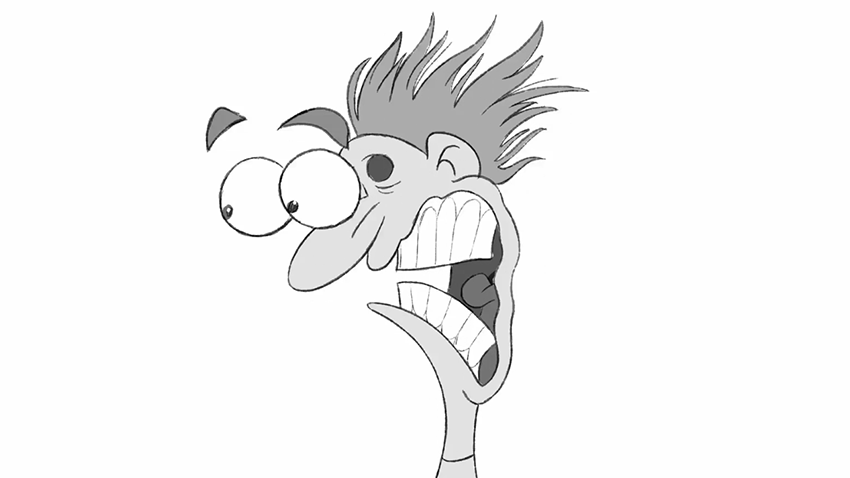Movies from my LINKEDIN-LEARNING ‘Tips & Tricks’ series covering cartoon physics & exaggeration, assembled into a virtual course. BTW, check out my patreon, there’s going to be a lot of animation resources posted there!
CARTOON PHYSICS
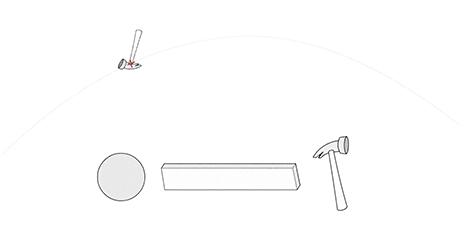 |
1: CENTER OF MASS
Just because we call it ‘cartoon physics’ doesn’t mean it doesn’t have rules! Objects still have a consistent center of mass, and have a sense of substance or matter. They are volumes, not lines. The lines represent objects that have dimensions, even if the drawings are flat.
|
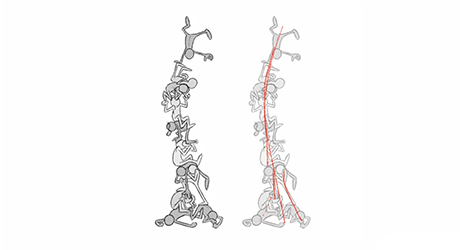 |
2: WEIGHT & MASS
When you draw a character or pose one with a CGI/vector puppet, you should strive to make the pose feel believable. The characters should have weight/mass, and feel as though they are made of atoms.
|
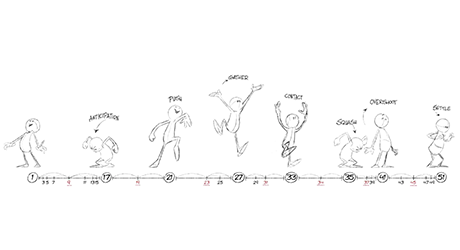 |
3: JUMPING WITH A PUSH
In order to create a feeling of intertia and/or momentum, animation should portray the effort required to set the character or object into motion.
|
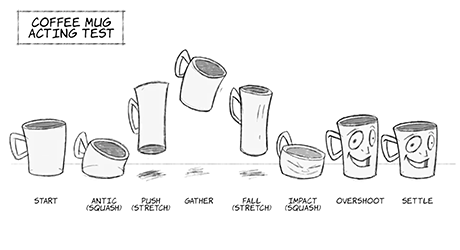 |
4: PUSHING OBJECTS
The principle from the previous movie can be applied to inanimate objects without arms or legs!
|
EXAGGERATION
 |
1: CARTOON FALLING
A joy of the Looney Tunes school of cartoon physics is the selective application of gravity. The character only begins to fall when they look down, or in this case, gravity effects the feet first, then the legs, then the body, etc.
|
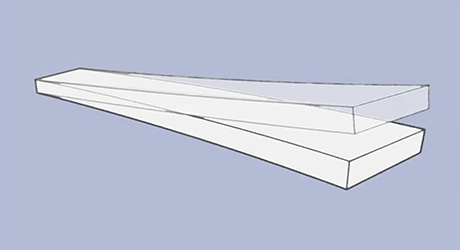 |
2: STAGGERS
Sudden vibrations from impacts are very effective. The great advantage of animating by hand or with a program like Harmony is that you can control the vibration patterns by changing the exposure of the frames.
|
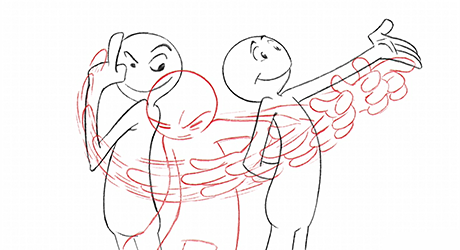 |
3: FAST TRANSITIONS
Sometimes the best transition is the fastest. If the action is extremely fast we can apply a ‘wipe’ or a drybrush effect. You see a lot of these in the 1940s Looney Tunes /Tom & Jerry cartoons.
|
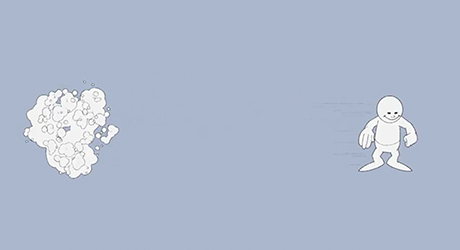 |
4: ZIPPING OFF SCREEN
A wipe / drybrush can effectively cheat a character off screen, saving you the pain of making them laboriously walk or run. This can’t be done all the time, but where appropriate it’s a good cheat.
|
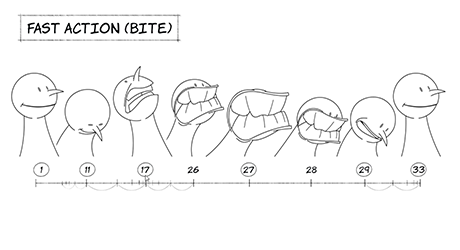 |
5: FAST BITE
When creating very fast animations it’s amazing to see the kinds of individual drawings that you can get away with. This is the realm of ‘feeling’ the drawing rather than seeing it.
|
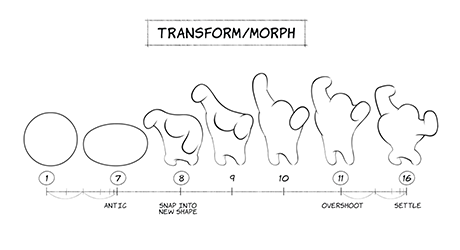 |
6: MORPHS
With the right anticipation you can believably ‘pop’ or snap from one state into another without the audience realising that there is no actual midway point from A to B!
|
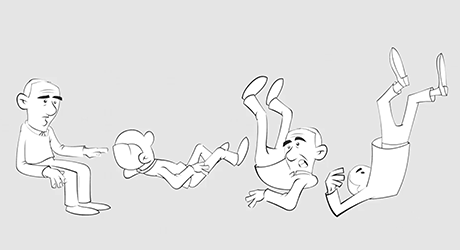 |
7: CHEATING TRANSFORMS
Another example of a cheat from one pose to another – in this case a very basic Flash/AnimateCC puppet rig. I didn’t want to hack a difficult inbetween between pose 2 and 3, so was able to set the scene up in such a way that we could snap between one to the other.
|
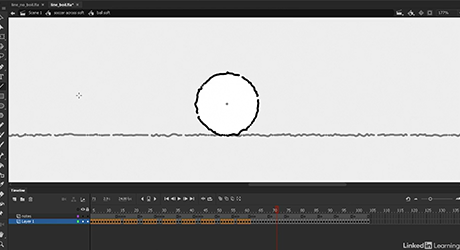 |
8: BOILING LINES
A very old trick to keep a drawing alive is to ‘boil’ the line, to make it seem like it’s alive and crawling.
|
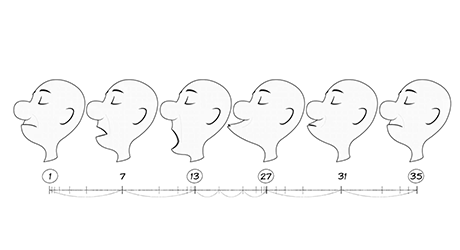 |
9: SNORING
An effective snore is achieved with a 3 keyframe stagger.
|
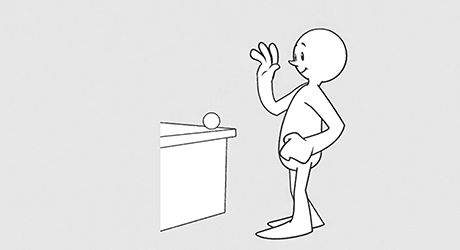 |
10: REACHING
As exaggeration goes, this is as subtle as it gets. When reaching for an object, flare the fingers and antic the hand slightly on the way down.
|
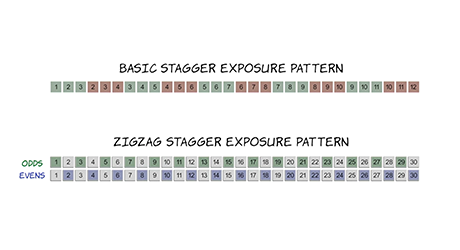 |
11: TREMOR
Different stagger patterns and the resulting effects.
|
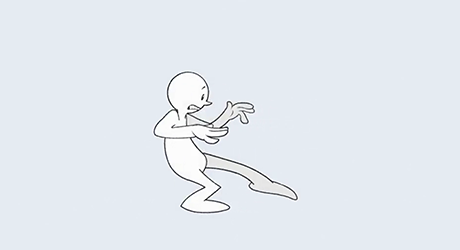 |
12: SHAKY WALK
How to apply a tremor to a walk cycle to create a sense of fear in the character. This could also be used to create the sense of extreme age.
|
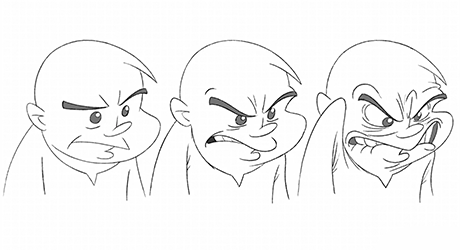 |
13: EXAGGERATE THE FACE
It’s always possible to push the facial expression a bit further. But how far can we go?
|
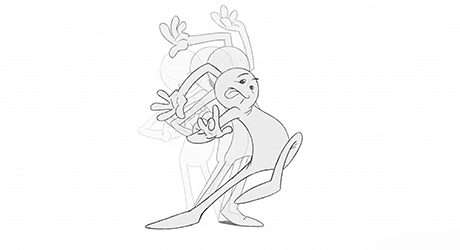 |
14: EXAGGERATE THE BODY
Let’s do the same thing with the body – until it breaks!
|
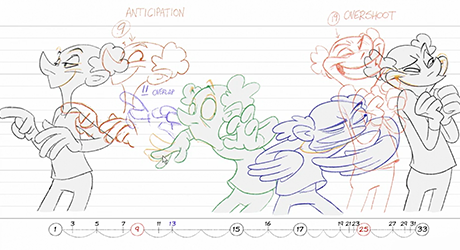 |
15: EXAGGERATING ACTING
In this movie we take a perfectly acceptable scene and just add a little extra, with some subtle additions.
|
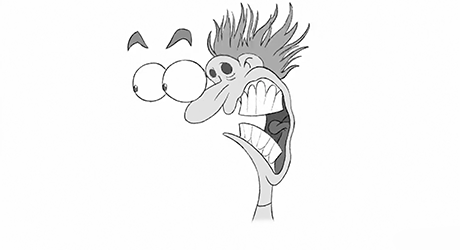 |
16: ADVANCED STAGGER
Make a classic 1940s scream with, you guessed it, yet another stagger.
|
For more courses there’s a masterlist of classes, covering traditional principles as well as how to animate in Photoshop, Flash-AnimateCC, Harmony and After Effects. For new movies dealing with the free design/animation app KRITA, subscribe to my youtube channel and check out my patreon!





















